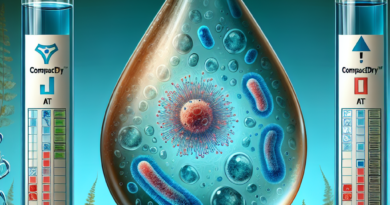Trends in Foodborne Pathogen Incidence: Insights from the Foodborne Diseases Active Surveillance Network
Understanding the Incidence of Foodborne Illnesses: A Decade of Insights
Foodborne illnesses pose a significant health threat globally, with millions of cases occurring annually. Understanding the dynamics of these illnesses is crucial for public health officials, food industry professionals, and consumers alike. In this blog, we delve into a study that sheds light on the trends of infections transmitted commonly through food over a decade, from 2006 to 2017. This research is particularly important for young aspiring scientists who are interested in epidemiology, public health, and food safety.
Background: The Role of Diagnostic Technologies in Detecting Foodborne Pathogens
Before we explore the findings of the study, it’s essential to understand the context in which these infections are detected and reported. Traditional culture methods have been the cornerstone of laboratory diagnostics for many years. However, with the advent of culture-independent diagnostic tests (CIDTs), the landscape of pathogen detection has changed significantly.
CIDTs, which include a variety of advanced techniques such as DNA-based syndrome panels, have revolutionized our ability to identify pathogens. These tests can detect bacterial antigens, nucleic acid sequences, or toxins without the need to culture organisms in a lab. This has led to the identification of illnesses that were not routinely captured by older methods, providing a more accurate estimate of the incidence of certain pathogens.
Results: A Decade of Data on Foodborne Infections
The study, conducted by the Foodborne Diseases Active Surveillance Network (FoodNet), presents a comprehensive analysis of laboratory-diagnosed infections caused by nine pathogens commonly transmitted through food. In 2017 alone, FoodNet reported 24,484 infections, 5,677 hospitalizations, and 122 deaths. The incidence per 100,000 population was highest for Campylobacter (19.2) and Salmonella (16.0).
One of the standout findings from the report is the significant decrease in the incidence of infection with Shiga toxin-producing Escherichia coli (STEC) O157 and Salmonella serotypes Typhimurium and Heidelberg over the past decade. Specifically, the incidence of STEC O157 infections decreased by 35% compared with 2006–2008. This decline is believed to parallel reductions in contamination of ground beef, a common source of STEC O157.
Conversely, the study observed increases in the incidence of infections with other pathogens. For instance, the 2017 incidence was significantly higher for Cyclospora (489% increase), Yersinia (166% increase), and Vibrio (54% increase) compared with 2014–2016. These increases are likely attributable to the more widespread use of CIDTs, which have enhanced the detection of these pathogens.
Impact: Implications for Public Health and Future Directions
The study’s findings have several implications for public health practice. The increased use of CIDTs can lead to higher and more accurate incidence rates, which is beneficial for surveillance and outbreak response. However, the reliance on CIDTs also presents challenges. Without culture confirmation, public health laboratories may struggle to subtype pathogens, determine antimicrobial susceptibility, and detect outbreaks effectively.
Moreover, the research highlights the effectiveness of targeted control measures, such as enhanced testing of poultry products for Salmonella and the implementation of the FDA Food Safety Modernization Act. These measures have likely contributed to the observed decreases in certain pathogen incidences.
In conclusion, while the study provides valuable insights into the trends of foodborne infections, it also underscores the need for continued vigilance and the implementation of more robust prevention strategies. It is a reminder that the fight against foodborne illnesses is ongoing and requires the concerted efforts of various stakeholders.
For young scientists, this study exemplifies the importance of surveillance, the impact of technological advancements in diagnostics, and the role of public health interventions. It is a call to action for continued research and innovation in the field of food safety.
Reference
Marder, MPH, E. P., Griffin, P. M., Cieslak, P. R., Dunn, J., Hurd, S., Jervis, R., … & Geissler, A. L. (2018). Preliminary Incidence and Trends of Infections with Pathogens Transmitted Commonly Through Food — Foodborne Diseases Active Surveillance Network, 10 U.S. Sites, 2006–2017. MMWR. Morbidity and Mortality Weekly Report, 67(11), 324–328. http://dx.doi.org/10.15585/mmwr.mm6711a3




